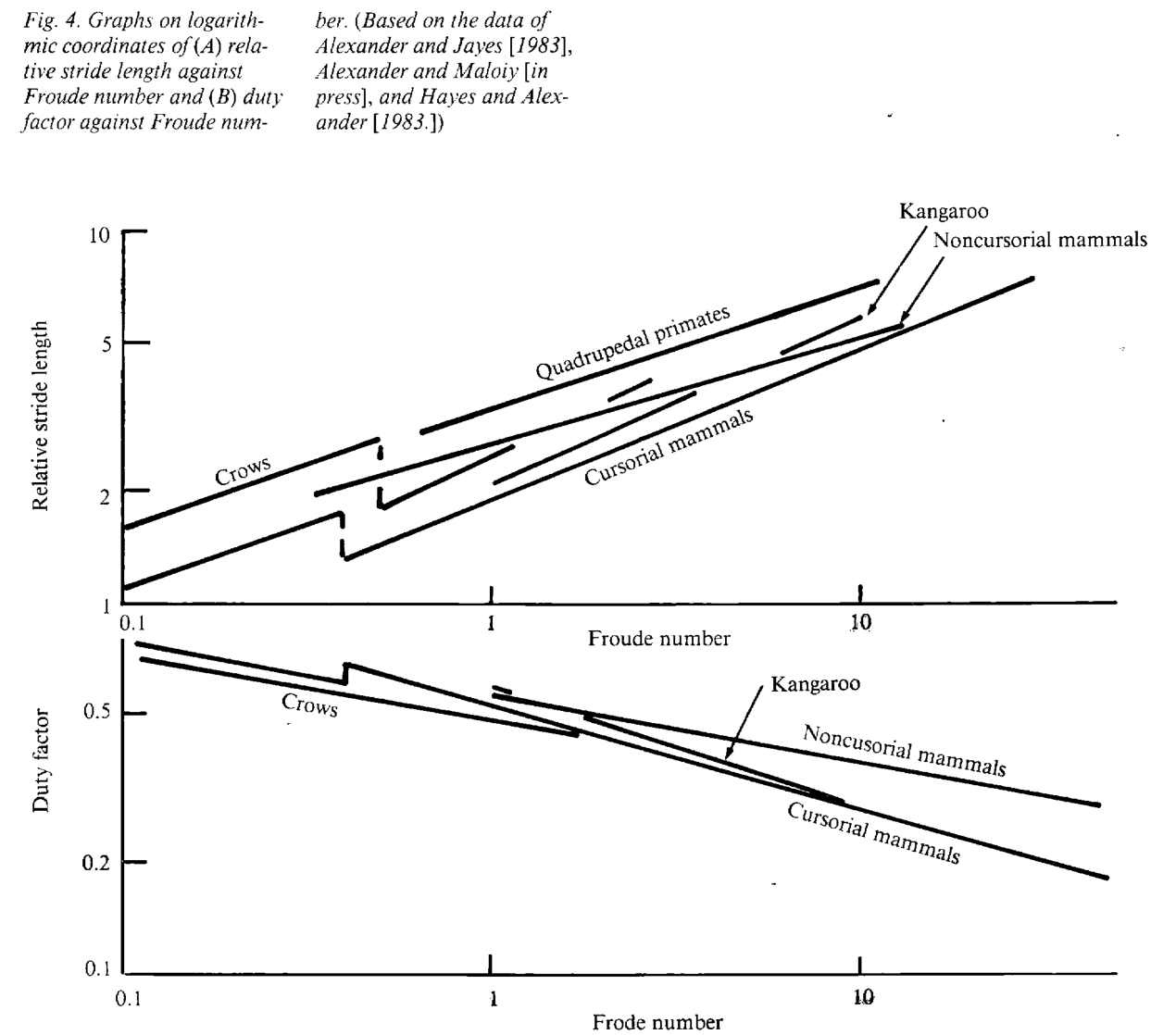The Gaits of Bipedal and Quadrupedal Animals
Alexander R. The gaits of bipedal and quadrupedal animals. The International Journal of Robotics Research. 1984;
mammals of different sizes tend to move in dynamically similar fashion whenever their Froude numbers $u^2 /gh$ are equal: here u is speed, g is the acceleration of free fall, and h is the height of the hip joint from the ground.
Research Problem
description of the gaits of two- and four-legged animals and some of the important optimization criteria(e.g. cost, reliability, and maneuverability).
Hypothesis
dynamic similarity is possible only if the motions have equal Froude numbers $u^2 /gh$ (Duncan1953).
The dynamic similarity hypothesis
Result

四足哺乳动物之间、两足与四足哺乳动物之间、鸟类和两足哺乳动物之间 相似的运动状态和相似的Froude number对应
Humans, geometric similarity and the Froude number: is ‘‘reasonably close’’ really close enough?
William Froude developed the Froude number in the context of his simulation of ships with the goal of creating similar wave patterns (Vaughan and O’Malley, 2005) with drag as the feature of importance (Langhaar, 1951), but his concept has been extended to other mechanical phenomena that are driven by gravity and inertia (Duncan, 1953)1.
Conclusion
(针对不同物种)size does not affect mass-specific mechanical cost of transport (Alexander and Jayes, 1983). The known shape differences among modern humans are, however, sufficiently large to account for much of the observed variation in metabolic energy expenditure and we expect this to be the case for any group that is of similar size but different shape. Unfortunately, we currently do not have a simple method to control or adjust for size–shape differences in individuals that are not geometrically similar. Musculoskeletal modeling is the only method that accounts for both size and shape. Those shape differences that are “reasonably close” at the mouse-to-elephant level may become “grossly different” for within-species energetic comparisons.目前尚没有一种简单的方法来控制或调整几何上不相似的个体的大小-形状差异。
The energetics of human walking: Is Froude number (Fr) useful for meta- bolic comparisons?
Kramer PA, Sarton-Miller I. The energetics of human walking: Is Froude number (Fr) useful for meta- bolic comparisons? Gait & Posture. 2008; 27(2):209–215. https://doi.org/10.1016/j.gaitpost.2007.03.009 PMID: 17459708
回归分析,速度、速度平方、Fr或LiMb的预测能力没有显著差异,所以Fr和LiMb都不能补偿腿长的影响。腿的长度确实影响行走的人的能量消耗
-
Duncan W. J. (1953). Physical Similarity And Dimensional Analysis: An Elementary Treatise London: Edward Arnold and Company. ↩︎